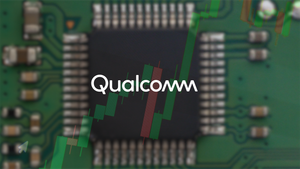
Building products installation services company Installed Building Products (NYSE: IBP) reported Q1 CY2025 results exceeding the market’s revenue expectations, but sales fell by 1.2% year on year to $684.8 million. Its non-GAAP profit of $2.08 per share was 5.5% below analysts’ consensus estimates.
Is now the time to buy IBP? Find out in our full research report (it’s free).
Installed Building Products (IBP) Q1 CY2025 Highlights:
- Revenue: $684.8 million vs analyst estimates of $674.4 million (1.2% year-on-year decline, 1.5% beat)
- Adjusted EPS: $2.08 vs analyst expectations of $2.20 (5.5% miss)
- Adjusted EBITDA: $102.4 million vs analyst estimates of $107.6 million (15% margin, 4.9% miss)
- Operating Margin: 10.2%, down from 12.7% in the same quarter last year
- Organic Revenue fell 4.2% year on year (2.9% in the same quarter last year)
- Market Capitalization: $4.53 billion
StockStory’s Take
Installed Building Products’ first quarter results were influenced by macroeconomic headwinds in the housing sector and adverse weather events, which impacted installation volumes across its core residential end-markets. CEO Jeff Edwards highlighted that “a slower-than-expected spring selling season and ongoing affordability challenges” affected demand, while same-branch sales fell as a result of both one less selling day and weather-related delays. CFO Michael Miller added that higher vehicle insurance and depreciation expenses weighed on gross margins, and administrative costs rose due to acquisition and startup expenses. Despite these pressures, the company continued to generate strong operating cash flow and prioritized acquisitions and returning capital to shareholders.
Looking forward, Installed Building Products’ management expects persistent demand headwinds in single-family and multifamily segments throughout the year, with recovery in lost weather-related revenues likely to be gradual. CFO Michael Miller stated, “We believe that headwinds for multifamily for us and for the industry will persist through 2025,” but noted encouraging signs in multifamily starts that could support the industry in 2026. The company is focused on optimizing its general and administrative expenses, targeting at least $15 million in cost reductions, and expects to see these savings materialize by the third quarter. Management also remains watchful for potential impacts from tariffs and is working with suppliers to mitigate cost increases.
Key Insights from Management’s Remarks
Management attributed the quarter’s results to lower installation volumes in core markets, ongoing cost pressures, and operational disruptions caused by severe weather. Strategic acquisition activity and targeted cost reductions were highlighted as key responses to these challenges.
-
Residential market softness: Demand in new single-family and multifamily installation markets declined due to affordability challenges and a slower spring selling season. Severe weather and one fewer selling day compounded these effects, particularly in residential installation segments.
-
Heavy commercial segment growth: The heavy commercial business experienced strong sales growth, supported by winning jobs in the data center construction industry, partially offsetting declines in light commercial and residential segments. Management expects this trend to continue given the current backlog.
-
Gross margin headwinds: Higher vehicle insurance and depreciation expenses, as well as a greater mix of lower-margin segments, contributed to a decline in adjusted gross margins. CFO Michael Miller explained these costs are only partially variable and adjust slowly relative to volume changes.
-
Acquisition-driven expansion: The company completed acquisitions in South Carolina and Wisconsin, adding diversification in after-paint products and spray foam installations. Management indicated that acquisition activity remains a top priority, with plans to exceed $100 million in acquired annual revenue for the year.
-
Administrative cost control: Management is implementing at least $15 million in targeted reductions to general and administrative expenses, with the expectation that these savings will begin to impact results by the third quarter. Ongoing optimization of branch locations and headcount is part of this effort.
Drivers of Future Performance
Management expects ongoing volume challenges in residential markets, with commercial segment growth and cost control initiatives influencing profitability for the remainder of the year.
-
Residential and multifamily headwinds: CEO Jeff Edwards and CFO Michael Miller both indicated that housing affordability issues and a cautious consumer outlook will weigh on volumes in both single-family and multifamily installation markets throughout 2025. Multifamily starts have shown early signs of bottoming, offering a potential recovery in the following year, but management expects pressure to persist for now.
-
Cost optimization focus: The company is prioritizing reductions in general and administrative expenses, aiming for at least $15 million in savings. Management expects these efforts, along with ongoing branch consolidation and operational efficiency improvements, to help offset margin pressure from lower volumes and fixed costs.
-
Acquisition pipeline and integration: Acquisitions remain a core growth strategy, with management confident in the pipeline and no significant change in seller appetite. Successful integration of recent acquisitions and achievement of targeted returns are expected to be important contributors to future revenue and market diversification.
Catalysts in Upcoming Quarters
In coming quarters, the StockStory team will closely monitor (1) the pace of recovery in residential and multifamily volumes following weather disruptions, (2) the realization of targeted cost reductions in general and administrative expenses, and (3) continued expansion and integration of acquisition activity. We will also watch for changes in building material pricing and evolving impacts from tariffs on cost structure.
Installed Building Products currently trades at a forward P/E ratio of 15.5×. Is the company at an inflection point that warrants a buy or sell? The answer lies in our full research report (it’s free).
Stocks That Trumped Tariffs
The market surged in 2024 and reached record highs after Donald Trump’s presidential victory in November, but questions about new economic policies are adding much uncertainty for 2025.
While the crowd speculates what might happen next, we’re homing in on the companies that can succeed regardless of the political or macroeconomic environment. Put yourself in the driver’s seat and build a durable portfolio by checking out our Top 9 Market-Beating Stocks. This is a curated list of our High Quality stocks that have generated a market-beating return of 183% over the last five years (as of March 31st 2025).
Stocks that made our list in 2020 include now familiar names such as Nvidia (+1,545% between March 2020 and March 2025) as well as under-the-radar businesses like the once-micro-cap company Tecnoglass (+1,754% five-year return). Find your next big winner with StockStory today.







